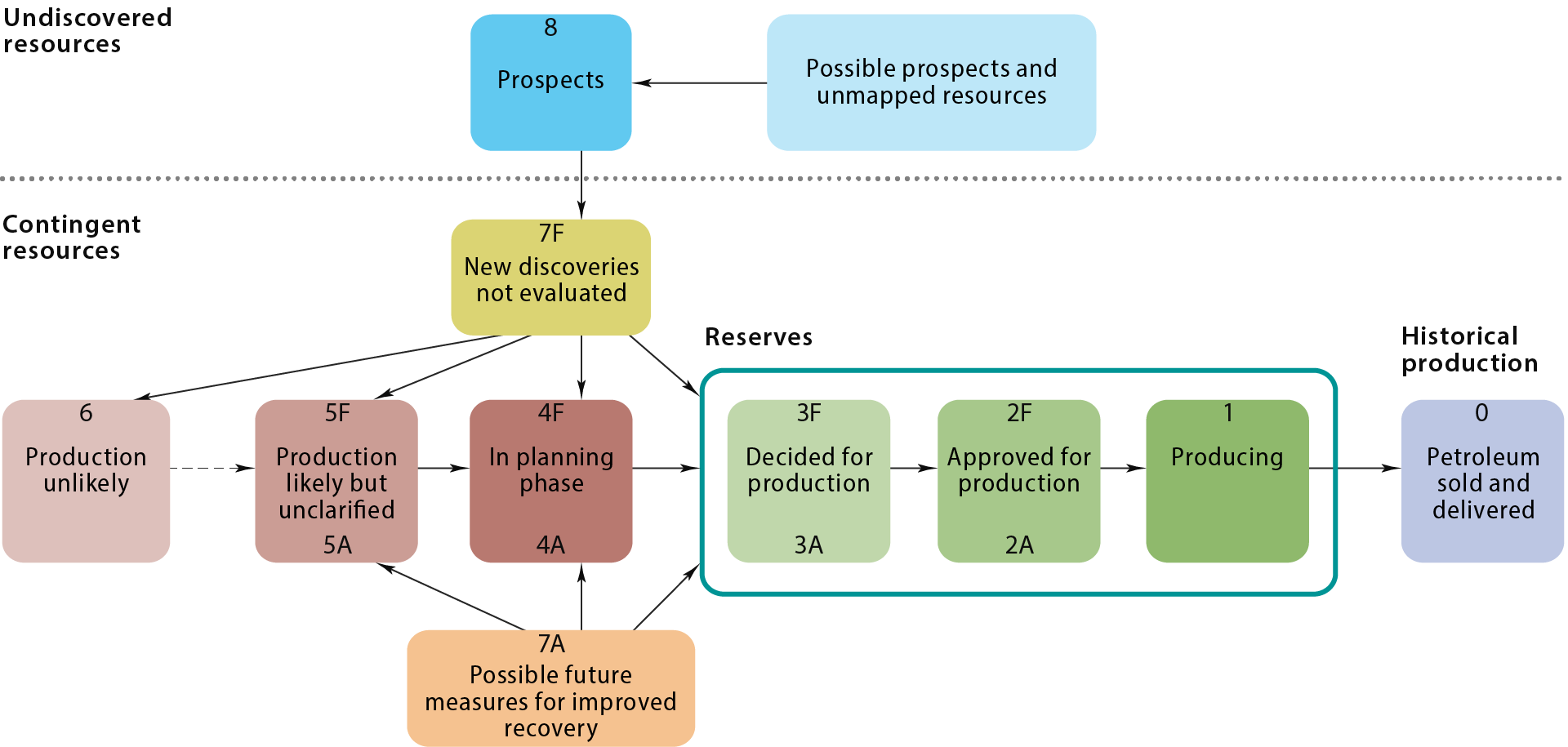Fact box – Resource classification
The NPD’s resource classification system is used for petroleum reserves and resources on the NCS (Figure 1.4). This system is structured in such a way that the government receives the most uniform possible reporting from licensees in connection with the NPD’s annual updating of the resource accounts.
"Resources" are a collective term for all the oil and gas which can be recovered. They are classified in the NPD’s resource classification system by their level of maturity with regard to how far they have come in the planning process from discovery to production.
Developed in 1996, the classification system was revised in 2001 and 2016. Changes in 2016 primarily involved language improvements, including new designations for certain resource classes. The classification relates to the total recoverable quantities of petroleum.
The system is divided into three classes: reserves, contingent resources and undiscovered resources. All recoverable petroleum quantities are termed resources, and reserves are a special category of these. Reserves are the petroleum quantities covered by a production decision. Contingent resources embrace both recoverable quantities which have been discovered but are not yet subject to a production decision, and projects to improve recovery from the fields.
The classification utilises the letters "F" (first) and "A" (additional) respectively to distinguish between the development of discoveries and deposits and measures to improve recovery from a deposit.
Undiscovered resources are those petroleum quantities which could be proven through exploration and recovered. The quantities produced, sold and delivered form aggregate historical production [3].

Figure 1.4 Resource classification in 2022